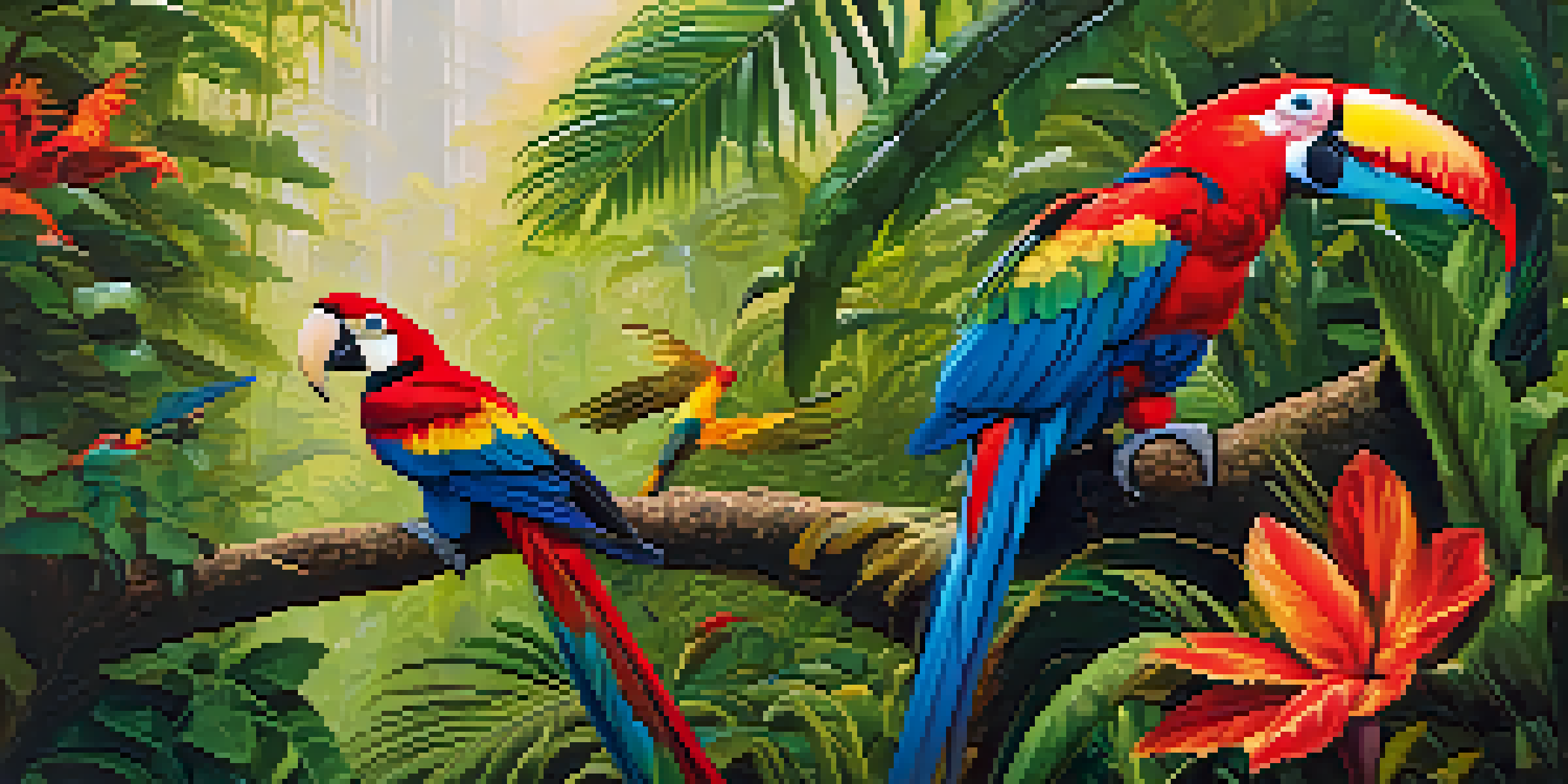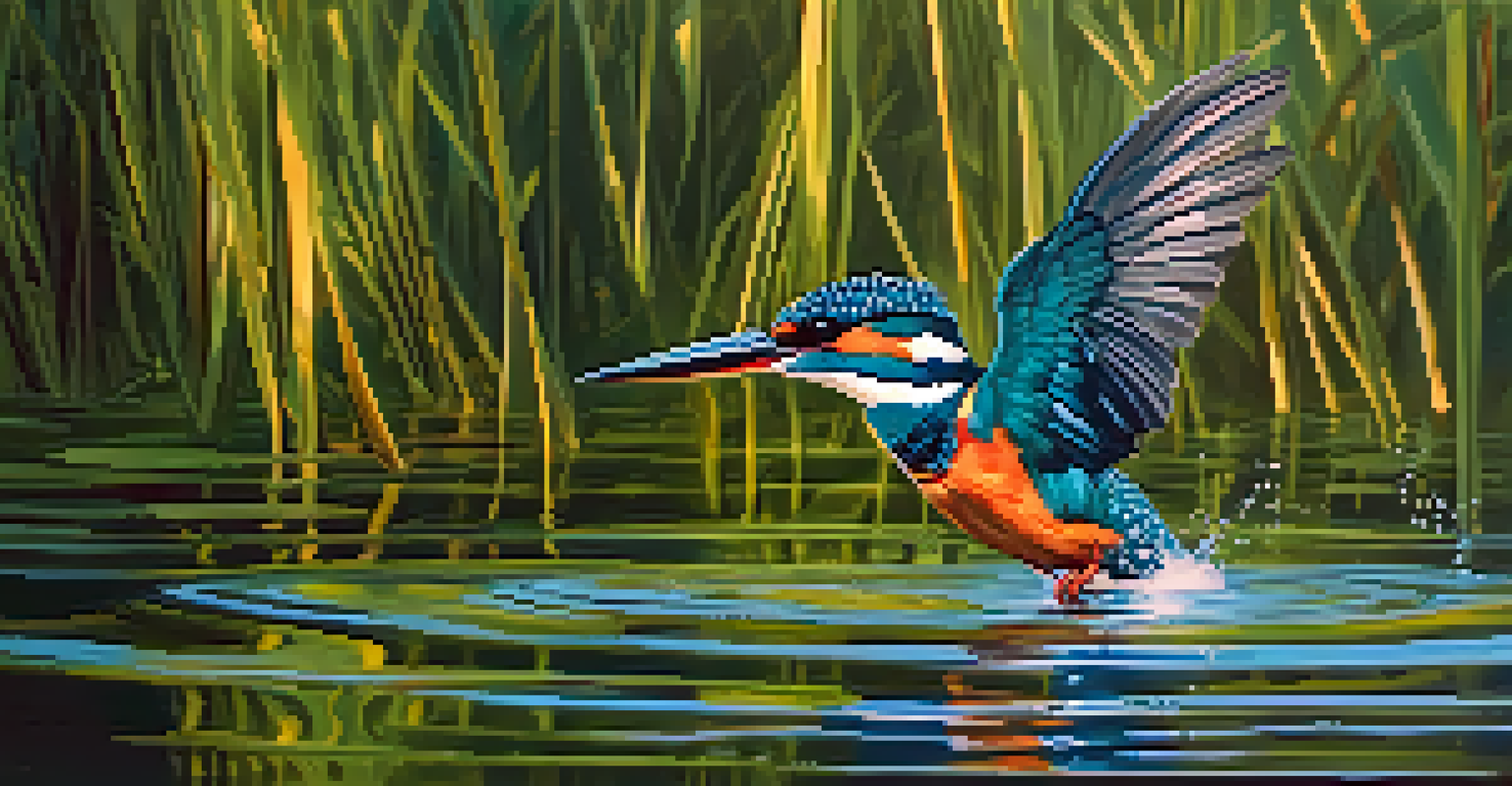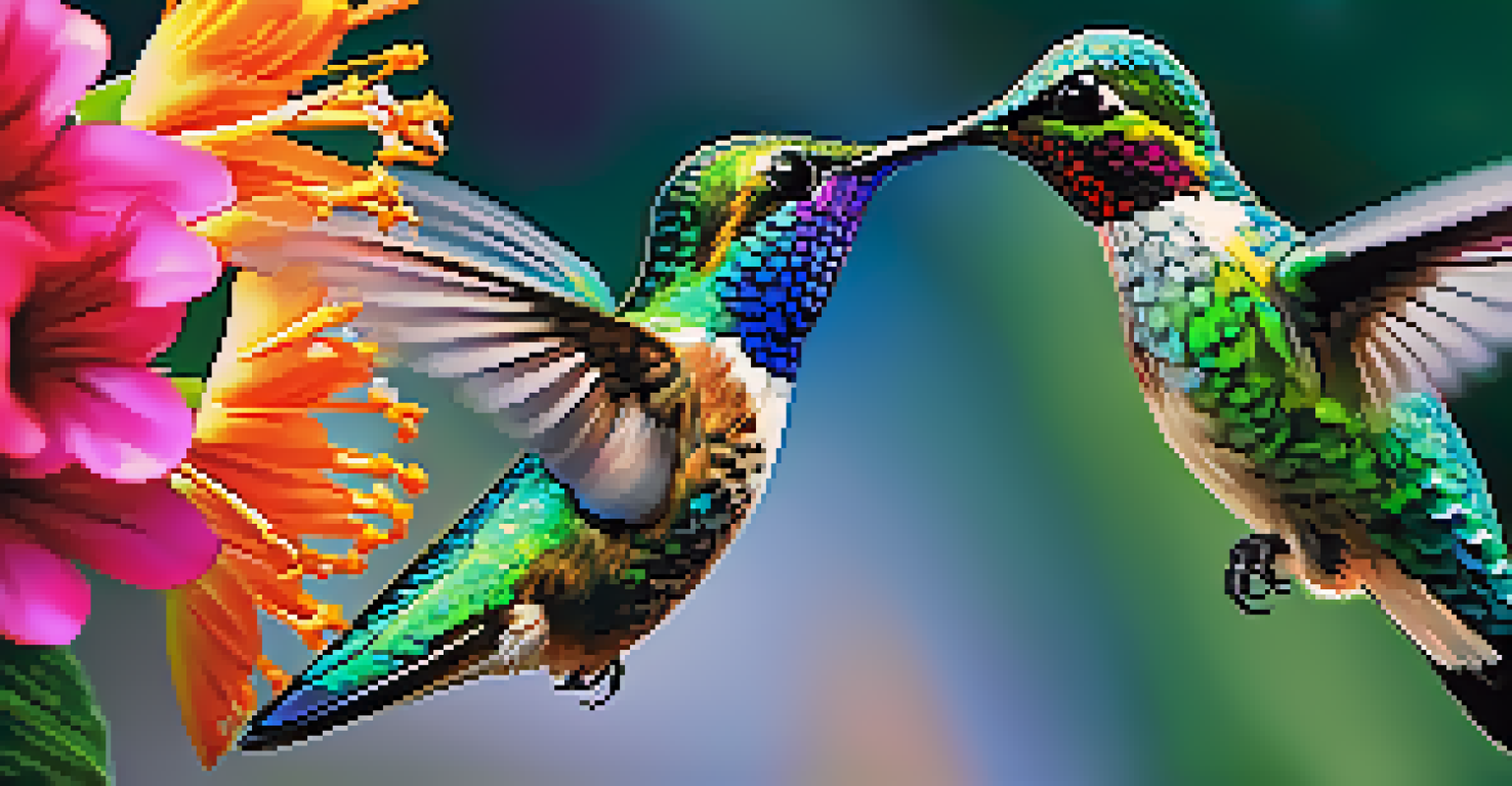Exploring the Amazon Rainforest: A Birdwatcher's Paradise

The Amazon: A World of Biodiversity Awaits
The Amazon Rainforest is often regarded as one of the most biodiverse regions on the planet, and for good reason. Spanning over 5.5 million square kilometers, it is home to approximately 1,300 bird species, making it a paradise for birdwatchers. From the vibrant macaws to the elusive harpy eagle, every corner of this lush ecosystem offers a new feathered friend to discover.
In every walk with nature one receives far more than he seeks.
With such a vast array of habitats, including flooded forests, towering trees, and hidden wetlands, each area in the Amazon provides unique opportunities for spotting different bird species. This diversity of environments not only attracts birds but also creates an enchanting atmosphere for birdwatchers seeking an unforgettable experience. Imagine standing amidst the towering trees while listening to the symphony of bird calls that fill the air.
Whether you are a seasoned ornithologist or a casual nature lover, the Amazon Rainforest offers an unparalleled chance to connect with nature. The sheer variety of birds, coupled with the stunning landscapes, creates an experience that leaves a lasting impression. It's a journey into a world where every glance upwards may reveal a breathtaking avian spectacle.
Best Times to Visit for Birdwatching
Timing your visit to the Amazon is crucial for a fruitful birdwatching experience. The dry season, typically from June to November, is often considered the best time to explore, as birds are more active and easier to spot. During this time, the reduced rainfall leads to lower humidity, making it more comfortable for birdwatchers to trek through the forest.

Additionally, the dry season coincides with the migratory patterns of several bird species, bringing in even more visitors to the Amazon. Observing these migratory birds adds an exciting layer to your birdwatching adventure. Imagine witnessing a mix of local and migratory birds as they soar through the canopy, each showcasing their unique colors and characteristics.
Best Time for Birdwatching
The dry season from June to November is ideal for spotting birds in the Amazon due to increased activity and better visibility.
While the wet season has its own charm, with lush greenery and vibrant flowers, the visibility of birds can be less predictable. However, some birdwatchers prefer this time for the chance to see nesting behaviors and unique species that thrive in the rainy season. Ultimately, the best time to visit depends on your birdwatching goals and preferences.
Essential Gear for Birdwatching Adventures
Packing the right gear is essential for any birdwatching trip, especially in the Amazon Rainforest. A good pair of binoculars is a must-have, allowing you to observe birds from a distance without causing disturbance. Look for binoculars with a wide field of view and good light-gathering ability to enhance your viewing experience, especially in the dim light of the forest.
Birds are indicators of the environment. If they are in trouble, we know we’ll soon be in trouble.
In addition to binoculars, a reliable field guide or bird identification app can be incredibly helpful. These resources will aid you in recognizing the different species you encounter, enriching your experience as you learn about their behaviors and habitats. Having a notebook to jot down observations or sketch your favorite birds can also deepen your connection with the environment.
Don’t forget to dress appropriately for the rainforest! Lightweight, breathable clothing that offers sun protection, along with comfortable hiking boots, will keep you comfortable during your explorations. A good pair of waterproof shoes can also be beneficial, as muddy trails are common in this lush ecosystem.
Must-See Bird Species in the Amazon
The Amazon Rainforest is home to a multitude of remarkable bird species that every birdwatcher should aim to see. The vibrant scarlet macaw, with its striking red, yellow, and blue plumage, is a true icon of the rainforest. Spotting these magnificent birds in their natural habitat is a highlight of any birdwatching expedition.
Another must-see species is the toucan, known for its oversized colorful bill. These birds are not only stunning to behold but also play a crucial role in the rainforest's ecosystem by dispersing seeds. Observing a toucan perched majestically on a branch is an unforgettable sight that captures the essence of the Amazon.
Essential Gear for Birdwatching
Bringing quality binoculars, a field guide, and appropriate clothing is crucial for a successful birdwatching adventure in the rainforest.
Don’t overlook the smaller, yet equally fascinating, species such as the hummingbirds and the tiny antbirds. Each bird adds its own unique charm to the vibrant tapestry of the rainforest. With patience and a keen eye, you’ll discover that the Amazon is a treasure trove of avian wonders waiting to be explored.
Understanding Bird Habitats in the Amazon
The Amazon Rainforest consists of various habitats, each supporting different bird species. Flooded forests, for example, are crucial for many aquatic and semi-aquatic birds, such as the Amazon kingfisher. These areas often serve as feeding grounds, where birds can hunt for fish and insects in the water.
On the other hand, the canopy layer of the rainforest is bustling with life, hosting species like the toucan and the colorful parrot. Understanding these habitats can significantly enhance your birdwatching experience. By knowing where certain birds are likely to be found, you can plan your excursions more effectively and increase your chances of spotting them.
Moreover, the understory of the rainforest, with its dense foliage, is home to shy species that are often overlooked, such as the antbirds and ground-dwelling species. Each layer of the forest presents its own unique birdwatching opportunities, showcasing the incredible diversity that the Amazon has to offer.
Birdwatching Etiquette in the Rainforest
Practicing good birdwatching etiquette is essential when exploring the Amazon Rainforest. Respecting wildlife and their natural habitat ensures that these beautiful birds can thrive for generations to come. For instance, maintaining a safe distance from nesting sites and not disturbing the birds is crucial for their well-being.
Additionally, keeping noise levels to a minimum helps create a peaceful environment that allows for better observation. Birds can be easily startled, so whispering and moving quietly can increase your chances of witnessing their natural behaviors. Remember, the goal is to observe and appreciate without causing disruption.
Respect Birdwatching Etiquette
Practicing good birdwatching etiquette, such as maintaining distance and minimizing noise, is vital for protecting wildlife in the Amazon.
It's also important to follow local regulations and guidelines set by tour operators and conservation organizations. These rules are designed to protect both the wildlife and the ecosystems they inhabit. By adhering to these practices, you contribute to the preservation of the Amazon and its avian inhabitants.
Finding Guided Tours and Resources
For those looking to enhance their birdwatching experience in the Amazon, joining a guided tour can be an excellent option. Expert guides not only share their extensive knowledge about the birds but also know the best locations and times to spot them. This local insight can make a significant difference in your overall experience.
Many tour operators offer specialized birdwatching tours, catering to different skill levels and interests. Some tours focus on specific areas of the rainforest, while others may include overnight stays in eco-lodges, allowing for immersive experiences. The added convenience of transportation and accommodations can also alleviate the stress of planning your trip.

In addition to guided tours, online resources and birdwatching communities can provide valuable information about recent sightings and tips for your journey. Engaging with fellow birdwatchers can inspire you and help you prepare for the incredible adventure that awaits in the Amazon Rainforest.